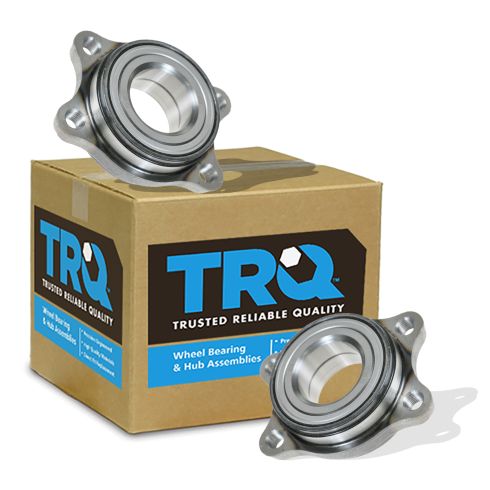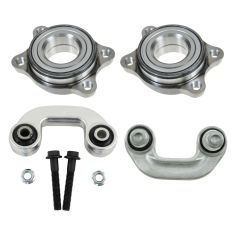1ASHS00399-VW Audi Driver & Passenger Side 2 Piece Wheel Hub Bearing Module Set TRQ BHA52865

Replaces
2003 Audi S6 Rear Driver & Passenger Side 2 Piece Wheel Hub Bearing Module Set TRQ BHA52865

Product Reviews
Loading reviews
5.00/ 5.0
2
2 reviews
It works less!
March 3, 2019
The hub and bearing fit my 2005 sienna perfectly. I do not have to use the expensive OEM parts.
September 21, 2020
Fit great over a year
Customer Q&A
Does this come with the hardware that you are required to change . If not do you sell the hardware required for this repair separately?
March 8, 2017
10
This set of bearing modules do not come with any hardware.
March 12, 2017
Tim K
Do these module have the bearings already pre pressed in them?
March 14, 2020
10
Yes its just the bearing and mounting flange. You have to press your old hub into them.
March 14, 2020
W I
10
If you are wondering if the bearings are a pressed in unit, the answer is no however since the control arm is a magnesium type the bearing is gaulded and it is tight. A good lube to loosen has to be used, propane heat can be used but not acetylene because of the material of the arm and clockwise and counterclockwise method on the bearing and some patients and you will notice it working its way loose, clean it up with light sanding then anti-sieze
March 15, 2020
T S
10
These parts will come as being pressed in as shown in the photo. Please do not hesitate to contact us with any further questions.
March 15, 2020
Emma F
Are the bearings in these hubs or are they purchased separately?
June 30, 2022
10
These are the bolt in bearings for aluminum carriers.
June 30, 2022
Charlie C
10
Hello, this kit is just the bearing.
June 30, 2022
Ricale A
Audi is a registered trademark of Audi AG. 1A Auto is not affiliated with or sponsored by Audi or Audi AG.
See all trademarks.









